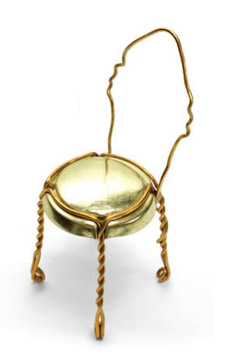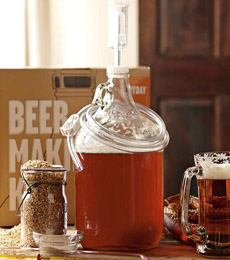|
When was the last time you added berries to your salad?
With a bounty of strawberries and blueberries now entering the market, Wendy’s has introduced its new seasonal Berry Almond Chicken Salad.
The salad is freshly prepared in-store with fresh blueberries, fresh California strawberries, California almonds roasted with sea salt, shaved Asiago cheese and a sliced warm grilled chicken breast, all over a bed of 11 different types of freshly chopped field greens. Topping it off is the restaurant’s fat-free raspberry vinaigrette dressing.
You can enjoy the salad at Wendy’s for lunch or a light, healthy dinner, or create it at home simply by purchasing the ingredients You can expand to other types of berries, including blackberries and raspberries, as well.
Don’t worry about the 11 different field greens.
|
|

Sprinkle your salad with fresh berries.
Photo courtesy Wendy’s. |
|
“Field greens” salad mixes can include arugula, baby spinach, dandelion greens, endive, frisée, green chard and red chard, green and red mustard greens, green and red romaine lettuce, lollo rossa lettuce, mizuna, perella, radicchio, red leaf lettuce, Russian kale, tango and tatsoi.
That’s a much more interesting palette than a plain bed of iceberg or romaine lettuce.
A bit of digression on fat-free dressings: You may want to avoid sugar rather than fat.
As we noted in our recent post on healthy fats, monounsaturated fats (“good fats”) are an important part of a healthy diet. While all fats average 100 calories a tablespoon, monounsaturated fats are calories well spent. The refined sugar and corn syrup found in salad dressing have little nutritional value, and comprise liabilities rather than benefits.
Avocado oil, canola oil, olive oil and peanut oil are rich in monounsaturated fat and deliver many health benefits, including:
Decreased risk for breast cancer.
Reduced cholesterol levels. (The American Heart Association recommends the consumption of monounsaturated fats to improve one’s blood lipid profile.)
Lower risk for heart disease and stroke (The FDA recommends that .8 ounce daily—about 2 tablespoons—may “possibly prevent coronary disease.”)
Weight loss, when switching to monounsaturated fat from polyunsaturated fats (corn oil, safflower oil and soybean oil, among others) and saturated fats (largely from animal products: meat, dairy, eggs).
Less severe pain and less stiffness for sufferers of rheumatoid arthritis. Diet plays a role in reducing the pain and stiffness of those who already have rheumatoid arthritis.
Many people enjoy bottled dressings, but read the labels! You can enjoy a better dressing—and a less expensive one—by mixing three tablespoons of olive oil (or other monounsaturated oil) with a tablespoon of raspberry vinegar.
It takes the same amount of time to whisk oil and vinegar together as it does to open the fridge, remove the bottle of salad dressing and take off the cap.
|




